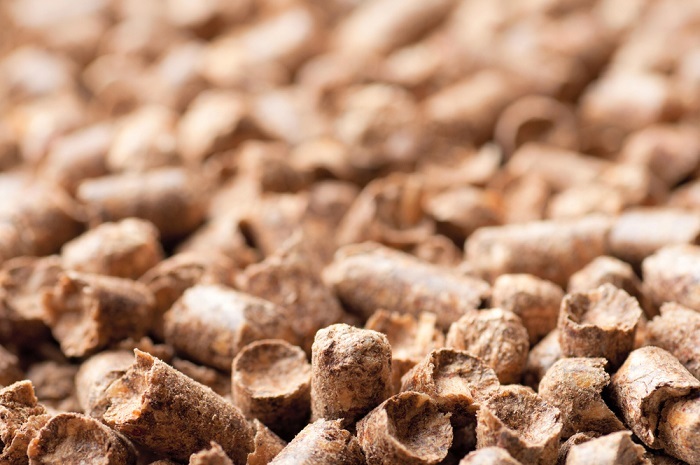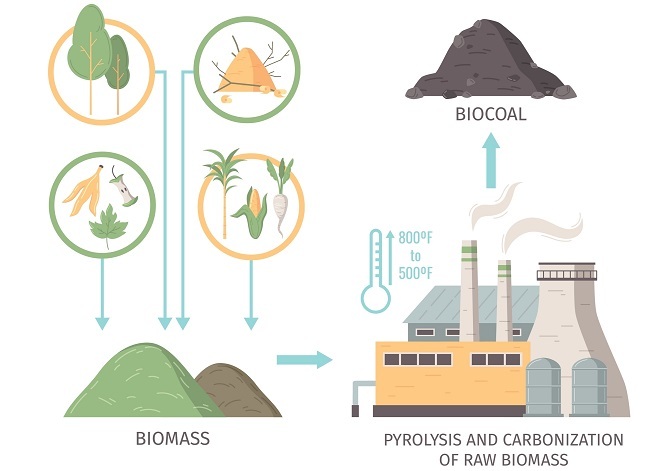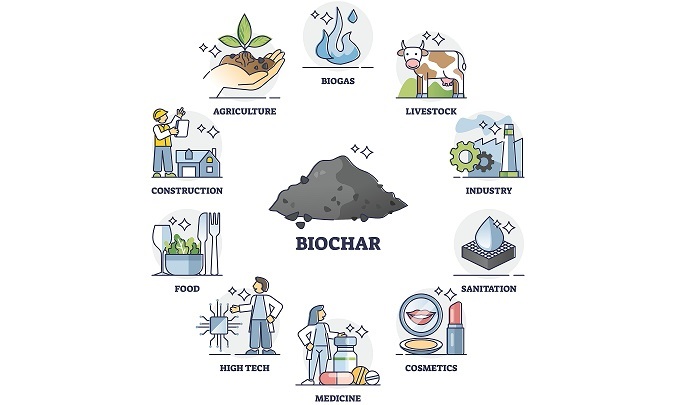
 Data Structure
Data Structure Networking
Networking RDBMS
RDBMS Operating System
Operating System Java
Java MS Excel
MS Excel iOS
iOS HTML
HTML CSS
CSS Android
Android Python
Python C Programming
C Programming C++
C++ C#
C# MongoDB
MongoDB MySQL
MySQL Javascript
Javascript PHP
PHP
- Selected Reading
- UPSC IAS Exams Notes
- Developer's Best Practices
- Questions and Answers
- Effective Resume Writing
- HR Interview Questions
- Computer Glossary
- Who is Who
What is Torrefaction and what is the purpose of it?
What is Biomass Torrefaction?
Torrefaction is the thermal conversion process which involves the removal of moisture and other volatiles thereby increasing the energy density by roasting of wood or any other biomass and converting into coal like material. Biomass used here is mainly the lignocellulosic biomass which is obtained from the forests. Torrefaction is also called as mild pyrolysis.
Torrefaction technology is developed by Bioendev Company of Sweden. This technology mainly reduces the stubble burning issues of rice fields and converts biomass into bio-coal which has better fuel characteristics than that of original biomass. Here through this technology about 65% of the biomass is converted into a useful biofuel.
To reduce the stubble burning issues which are mainly faced in the states like Punjab and Haryana of India, Bioendev Company has set up a pilot branch in National Agri-food Biotechnology institute in Mohali to evaluate the feasibility of the technology.

Principle Involved in Torrefaction
Here first the straw, grass, saw mill, wood biomass and other untreated biomass are dried and are transferred into reactors. Later this biomass undergoes Torrefaction by subjecting it to heat at 250-350°C in limited oxygen or no oxygen conditions. Usually at higher temperatures, torgas released from the reactor after torrefaction is very lean and it alone is used for supplying heat to the reactor.
If this heat is not enough then the external supply of fuel is provided through a combustion chamber. After less than 60mins period of time as an end product coal like pellets called torrefied biomass is formed. These pellets in combination with the coal are mostly widely used as bio-fuel in steel and cement industries.
How Does Torrefaction Work?
The following steps are involved in the process of torrefaction.
As a first step, un-processed wood chips are collected and stored to be used further as biofuel.
The obtained wood chips are then dried using a closed loop belt dryer.
These wood chips undergo actual torrefaction step where they are heated using the microwave technology. This results in the formation of charcoal like substance called torrefied wooden chips.
The obtained end product which is a terrified wood is then grinded and pelletized so that it can produce 10% more energy than wood.

Biocoal Production
Purpose of Torrefaction - Advantages
Advantages of Torrefaction include -
Main purpose of the torrefaction process is to produce the product from the biomass which can resemble the natural coal.
One pound of torrefied wood provides a heat value of about 10000-11000 BTU which is almost similar with coal.
Torrefied wood reduces the CO2 emissions as the process is done in a controlled environment. Also not much particulate matter released after the completion of process hence reduces pollution.
Bio-contamination is not observed after the torrefaction process.
This torrefied biomass is easy to use and store as these pellets are brittle than that of coal. Due to palletization step, torrefied biomass is easily stored and transported.
Bio-coal is a synthetic coal produced by the torrefaction of biomass.
Torrefied biomass increases its energy content by about 30% through the process of torrefaction and result in only 10% loss.
Dis-advantages of Coal
Some of the disadvantages include ?
Currently biomass usage is only about 2% and coal usage is more. Hence coal is said to be the biggest air polluter which also produces large amount of waste like ash, sludge and other toxic materials.
Lower the biomass lower is the energy content.
Higher moisture content leads to high wettability and lower is the efficiency.
Occupies large bulk mass for occupancy and hence increases the transportation costs.
Small radius of transportation result in resistance to biodegradability.
Applications of Torrefaction Products
Torrefaction and pyrolysis are used to produce wide range of products.
Usage of Biochar as fossil fuels reduces greenhouse gas emission and in agriculture it is used as plant growth promoters.
Bio-coke in the metallurgical industry is an ecological substitute for coke. This coke obtained from torrefaction is cleaner than the coke.
Torrefied wood products mixed with the resins to develop new material for exterior designs.
Pyrolytic oil which is the liquid fraction obtained from the pyrolysis process can be mixed with light or heavy fuels. This Bio-oil helps in extraction of valuable chemicals for the host.

Conclusion
Torrefaction is the bio refining process that converts biomass into value added products like bio-coal which is used as a biofuel in many industries like steel and cement industries. This method involved drying, heating and decomposing the wooden biomass etc. in a low or without oxygen and an operating temperature up to 350°C.
Hence this process is also called as mild pyrolysis. The resultant products are usually named on their use and these are mostly obtained in gaseous, liquid or solid forms. Bio-coal or Biochar which is obtained through this process is used as a replacement for biofuels.
These provide high energy densities and reduce green-house gas emissions during combustion. In agriculture this Biochar is used as plant growth promoters as these improve the physical and chemical properties of the soil. Activated carbons can be used for purifying water and air such as in domestic water purifiers.

